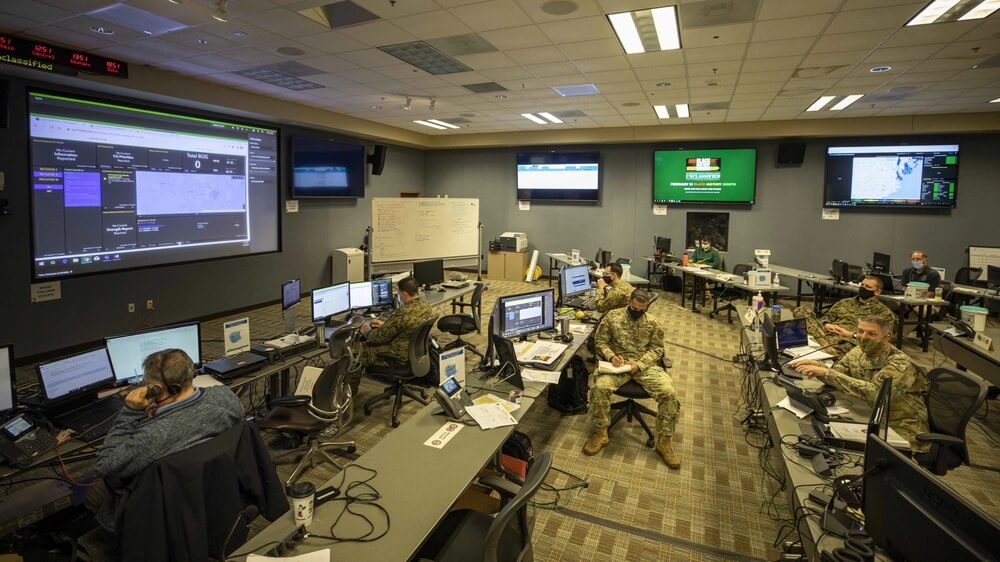
The People’s Liberation Army is planning to emulate the US Department of Defence’s Joint All-Domain Command and Control concept.
Towards the end of 2022 the US Department of Defence (DOD) published its annual assessment of Chinese military power. Military and Security Developments Involving the People’s Republic of China is the Pentagon’s annual summary of where the country’s most powerful strategic rival is and where it is going. One of the report’s starkest revelations is that the People’s Republic of China (PRC) is building an overarching, cross-domain Command and Control (C2) system. C4ISRnet likened the PRC’s efforts to the US DOD’s ongoing Joint All-Domain Command and Control (JADC2) system launched in 2018. JADC2 federates several disparate operational and strategic level C2 systems used by America’s individual armed services. It aims to accelerate the pace information can be shared within and between forces. The primary rationale behind JADC2 is to help defeat anti-access/area-denial strategies pursued by US rivals like the PRC.
The Age of Wisdom
It is arguably not surprising that the Chinese military is taking a similar route to its competitor. The report says that President Xi Jinping has urged the People’s Liberation Army (PLA) to “create a highly informatised force capable of dominating all networks and expanding the country’s security and development interests.” The goal is to ensure that information can be speedily and seamlessly moved around the battlefield. To this end, links will be established to share data across and between ground, maritime, air, space and cyberspace domains.
The PLA wants to perform decision-making at a faster pace than an adversary. This manoeuvrist mindset harks back to the famous OODA (Observe, Orient, Decide, Act) dictum of US strategist Colonel John Boyd. By no coincidence, this is also at the heart of the DOD’s JADC2 architecture. Launched as a result of the 2018 US National Security Strategy this aims to accelerate OODA loop navigation for US forces. At the heart of the JADC2 concept is federating stovepiped C2 systems used by America’s military. The intention is to improve intra- and inter-force communications.
It could be argued the PLA’s own ambitions directly mirror those of the JADC2. The DOD’s assessment says the Chinese military see “networked, technologically advanced (C2) systems as essential to providing reliable, secure communications to fixed and mobile command posts.” The goal is to improve decision-making at all levels in the armed forces. This ambition will be facilitated by embracing artificial intelligence, cloud computing and “big data analytics,” the DOD’s report continues.
Best of times, worst of times
The assessment warns that the PLA’s desire to win and sustain information superiority, for which multi-domain networking is essential, is not an end in itself. Information superiority will be achieved “by destroying the adversary’s ability to acquire, transmit and process information while simultaneously protecting the PLA’s ability to do the same.”
Inevitably this prompts the question as to the extent the PLA’s aspirations are an attempt to match, or surpass, the DOD’s JADC2 endeavours? The assessment infers that Chinese military scholarship has been thinking along these lines for some time and may be an example of great minds thinking alike. The scholarship notes the US and her allies dominating the information space during Operation Desert Storm in 1991. This was the direct result of the US-led coalition attacking Iraq’s C2 systems and communications networks. Both the US and PRC are taking the correct lessons from history.
Ultimately, the PLA “believes that it can successfully deter and manage a conflict by either controlling or destroying an adversary’s access to information.” As the US DOD is showing via JADC2, the Pentagon believes it can do the same. The contest will be decided by whichever network is the quickest, most efficient and most survivable in any future conflict.

by Dr. Thomas Withington













